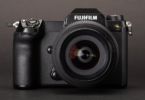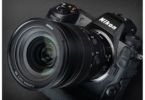Introduction

The Sony ZV-E10 is a 24MP APS-C mirrorless interchangeable lens camera aimed at vloggers. It features an articulating touch-enabled selfie screen, 4K video capture, headphone and microphone ports, and a variety of additional accessories to aid in video capture, including the grip seen in the photo above (sold by separate) and a range of sophisticated microphones.
Specs-wise, the ZV-E10 is familiar: Everything from its sensor to its AF system to its video capabilities is the same as Sony’s entry-level a6100. But in terms of design and features, some significant differences set them apart. The ZV-E10 is essentially the spirit of Sony’s ZV-1 vlogging compact, expanded as an entry-level APS-C ILC.
Let’s take a closer look at its specs:
Key specifications
- 24MP APS-C CMOS sensor
- Highly reliable AF system with face and eye detection
- 4K/24p video capture with no crop (4K/30p is cropped)
- 1080/120p capture for slow-motion footage (cropped)
- Built-in directional 3-capsule microphone with windscreen
- Fully articulating touch-sensitive display
- 3.5mm headphone and microphone ports
- Livestream-capable via USB-C connection
- 440 shots per charge, 80 mins continuous record per charge
- Capable of shooting vertical video
The Sony ZV-E10 will be available at the end of August, in either black or white, at a body-only price of $700. You can also pick one up kitted with the Sony 16-50mm F3.5-5.6 Power Zoom lens for $800.
What’s new & key features
More than just a viewfinder-less a6100, the ZV-E10 aims to make video capture easy and high-quality. Let’s take a look at some of the functions and modes that make this possible, many of which were first introduced on the compact Sony ZV-1:

Video call-outs
The ZV-E10 records a 4K video with oversampling at 24 and 30p. There is noticeable clipping in 30p mode (1.23x, the same as on the a6100), but there is no clipping when shooting at 24p.
Unlike the a6100, the ZV-E10 gets Sony’s cinematic picture profiles, of which there are ten different options. These profiles provide the ability to shoot a low-contrast appearance for ranking in publication. The camera also offers S-Log 2 and 3, as well as HLG capture. But keep in mind that this is an 8-bit camera, and S-Log 3 and HLG images will fall apart a bit easier when rated, compared to a 10-bit camera.
The ZV-E10 also offers high-speed shooting capabilities up to 1080 / 120p, allowing for a 4x slow-motion effect (with 1.14x crop).
Audio call-outs
This camera is well set up to capture nice audio, whether you plan to connect an accessory microphone or use the camera’s built-in microphone.
A multi-interface shoe on the upper left of the camera body supports digital audio. And Sony has several different microphone options that work with this proprietary connection medium, including the recently announced ECM-W2BT wireless microphones, as well as several shotgun-style options.
Additionally, the camera has a built-in 3-capsule directional microphone, which provides pretty decent quality audio (when vlogging in selfie mode), for those who wish to avoid purchasing additional accessories. Additionally, the ZV-E10 ships with a hot shoe attachable windshield (also known as a ‘dead cat’).
For those who wish to connect a non-proprietary microphone, the ZV-E10 also offers a 3.5mm microphone jack, in addition to a headphone jack for audio monitoring.
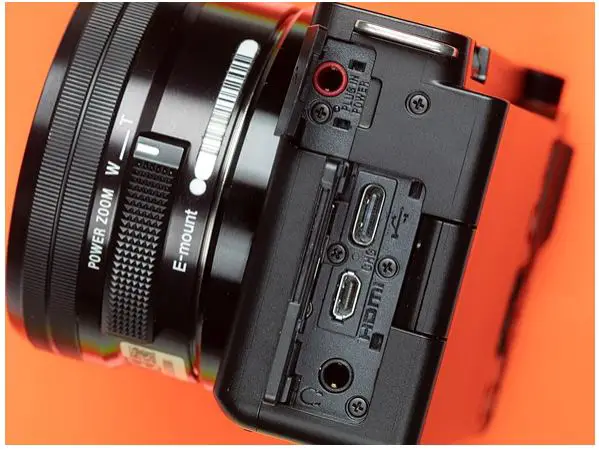
Image stabilization
There is no sensor-shift image stabilization on the ZV-E10, but electronic vibration reduction is available, and the optical IS is compatible with Sony’s OSS-equipped lenses. During video capture, users can choose between ‘Active’ and ‘Standard’ stabilization modes. The former, which is the default, use Digital IS + Optical IS to smooth things out but comes with a hefty 1.44x crop factor.
The standard IS mode simply relies on optical stabilization (and is less effective), but it doesn’t have a clipping factor either, which is useful if you’re trying to maintain a wide field of view for vlogging.
USB streaming and mobile connectivity
The ZV-E10 is capable of streaming live video and audio when connected to a WiFi-enabled device via USB-C. It supports UVC / UAC standards and can stream up to 720p depending on the device it is connected to. You can also use Sony’s Imaging Edge app, available for desktop and mobile devices, to set up a live stream, but the quality will be slightly lower (576p).
I was able to get a live feed from the camera settings and it was streaming in minutes
Setting up a USB live stream from the camera is pretty straightforward. On the first page of the second shooting menu, you will find an option for ‘USB Transmission’. Just turn on this option, connect the camera via USB-C to a smart device or computer, and open the live streaming platform of your choice. I was able to get a successful live stream from the camera settings and it was streaming in minutes by connecting the ZV-E10 to my MacBook Pro and using Facebook Live.
Speaking of Imaging Edge, it can be used to view and transfer movies and still images (including Raws) from the camera, even when the camera is off. The ZV-E10 will also save metadata with vertical video clips, so if you transfer them to a mobile device, they will be displayed correctly.
Product Showcase feature
The product display function was first introduced on the ZV-1 and it is quite useful. When turned on, the camera will automatically prioritize nearby objects over its face detection system, resulting in a smooth focus shift from face to the product. It’s a simple and effective way to create a classy effect while vlogging. You can see a demo of the feature in action in the video above.
Background Defocus feature
By default, the ‘C1’ button on the top of the Sony ZV-E10 turns the ‘Background Blur’ function on and off. This feature, aimed at beginners, simply opens the opening fully when pressed. Unfortunately, in bright light this will often force the camera to use a fast shutter speed to compensate, resulting in somewhat choppy and jarring video footage. Also, this is not a function that you will want to activate while capturing, because there is an exposure ‘flutter’ when the button is pressed.
Soft Skin effect
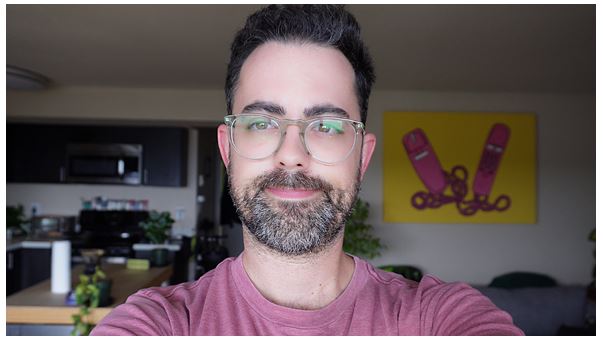
Sony’s Soft Skin effect set to ‘high’ looks a bit unnatural.
Sony’s Soft Skin effect has been around for a while and does exactly what it sounds like. Users can set the effect to low, medium, or high (or off). The bottom two settings do a pretty decent job of smoothing out the face, without looking unnatural, but the high setting is a bit over the top.
It is worth noting that this feature is available when taking photos and videos. You can see an example, set to ‘low’ in the vlogging demo further down the page.
How it compares
Both the Canon EOS M50 Mark II and the Fujifilm X-T200 are strong competitors in this market segment. Let’s see how the three cameras stack up against each other on a variety of specs. And for the sake of comparison, we also include the two closest siblings of the ZV-E10 in the a6100 and Sony ZV-1:
| Sony ZV-E10 | Fujifilm X-T200 | Canon EOS M50 II | Sony a6100 | Sony ZV-1 | |
|---|---|---|---|---|---|
| MSRP (lens kit) | $800 | $800 | $700 | $850 | $800 |
| Type of camera | Mirrorless ILC | Mirrorless ILC | Mirrorless ILC | Mirrorless ILC | Compact camera (24-70mm equiv. zoom) |
| Sensor | 24MP APS-C | 24MP APS-C | 24MP APS-C | 24MP APS-C | 1″-type (116mm2) |
| Stabilization | Lens + electronic | Lens + electronic | Lens+ electronic (in video mode) | Lens only | Lens + electronic |
| AF system | Phase-detect | Phase-detect | Dual Pixel phase-detect (except during 4K capture) | Phase-detect | Phase-detect |
| LCD design | Fully artic. | Fully artic. | Fully artic. | Tilting | Fully artic. |
| LCD size/res | 3″ / 0.92M-dot | 3.5″ / 2.76M-dot | 3″ / 1.04M-dot | 3″ / 0.92M-dot | 3″ / 0.92M-dot |
| EVF panel | n/a | 2.36M-dot OLED | 2.36M-dot OLED | 1.44M-dot OLED | n/a |
| EVF mag | n/a | 0.62x | Not specified | 0.71x | n/a |
| Burst rate (w/AF) | 11 fps | 8 fps | 7.4 fps | 11 fps | 24 fps |
| Max video | 4K/30p | 4K/30p | 4K/30p | 4K/30p | 4K/30p |
| 4K crop | None (24p) 1.2x (30p) | None | 1.5x | None (24p) 1.2x (30p) | None |
| Mic/headphone socket | Yes / Yes | Yes / Yes (via USB-C adapter) | Yes / No | Yes / No | Yes / No |
| Battery life (LCD) | 440 shots | 270 shots | 305 shots | 420 shots | 260 shots |
| Dimensions (WxHxD) | 115 x 64 x 45mm | 121 x 84 x 55mm | 116 x 88 x 59mm | 120 x 67 x 59mm | 106 x 60 x 44mm |
| Weight | 343 g | 370g | 390g | 396g | 194 g |
On paper, the ZV-E10 has a lot going for it: it offers the best battery life of the bunch, shoots 4K / 24p without cropping, and is the only camera on the list with a standard 3.5mm microphone and headphone port. It also offers the best video AF, along with the ZV-1, including a specific focus mode for vlogging. Of course, if having an electronic viewfinder is important to you, the Fujifilm X-T200 will probably be a better option.
Body, handling & behavior
Top plate
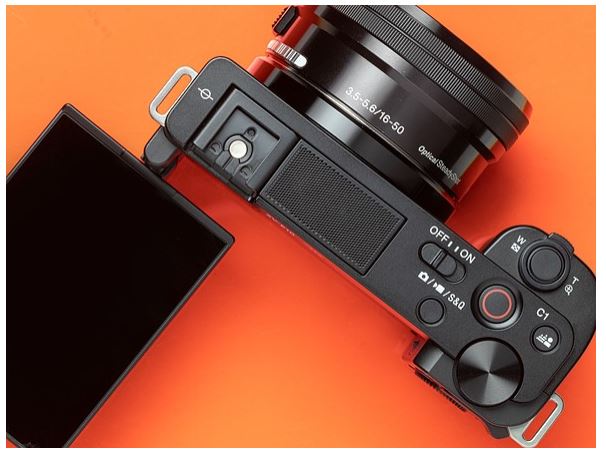
On the top plate of the ZV-E10 (left), you will find the flash shoe / multi-interface shoe for connecting a flash or microphone. As mentioned, the shoe supports digital audio and certain Sony microphones will work without the need to plug into the 3.5mm jack (located on the side of the body).
Alongside the hot shoe is the built-in microphone, on / off switch, and a button that allows users to quickly switch between stills mode, video mode, and high-speed video mode (called S&Q mode for ‘ slow and fast ‘) with a touch of the finger. Unfortunately, all the camera settings are kept when you switch modes, which means you may find yourself adjusting the shutter speed or aperture quite dramatically if you’re using manual controls. The camera also has a large record button in addition to a separate shutter button.
Surrounding the shutter button is a zoom lever with 8 programmable zoom speeds – this is Sony’s first consumer ILC with a zoom lever since 2014 a5100. You will also find the programmable ‘C1 / background blur’ button on the top plate: pressing it simply forces the camera to shoot with the widest possible aperture. For more advanced users who are comfortable controlling the aperture themselves, the function of this button can be reassigned to something more useful.
Rear and customization

The ZV-E10’s rear button layout is reminiscent of the a6100’s (left).
The ZV-E10, like the a6100, has two command dials: one on the top plate and the other on the rear. We don’t love this design option because both dials are controlled with the same thumb, which means you have to move your hand every time you want to adjust one or the other.
The rear control dial has four clickable positions, all of which are customizable. By default, they provide access (from the top moving clockwise) to display settings, ISO settings, exposure compensation, and drive mode. The Fn (function) button, which opens the quick access ‘function menu’ by default, can also be customized, as can the Trash button (which is set to Product Show mode by default).
It’s worth noting that all of the customizable buttons can be configured differently for stills, video, and playback modes. And the 12-slot function menu can also be customized separately for photos and video shots.
Articulating display

Unlike the a6100, the ZV-E10 has a fully articulated rear display (3 “, 1.44M dots). It is touch-sensitive, but not as responsive. While vlogging, I found it very helpful that a large red rectangle appeared around the frame on the LCD screen, to indicate that video capture is taking place. The camera also features a front tally/recording lamp to make sure you know when it’s “rolling” (this can be turned off).
For the most part, the touch capability only works when recording video and still images. Users cannot use the touch screen to navigate menus, select function menu options, or search playing images/videos. However, it can be used to zoom in on a playback image to 100% by double-tapping the screen.
Ports
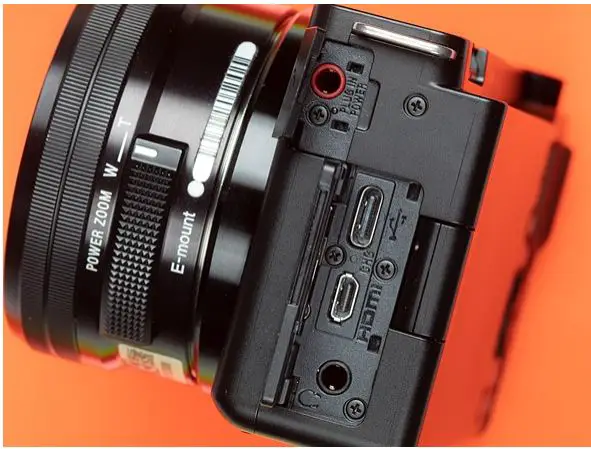
On the side of the camera, under a somewhat flimsy plastic door, you’ll find most of the camera’s connection points, including a USB 3.2 Gen1 port (which can be used for charging), a micro-HDMI port, and a 3.5mm headphone port. Under a separate door, above, you will find a connection point for a 3.5mm microphone jack.
The microphone jack is well placed and having a unit plugged in does not hinder the articulation of the display; the headphone, HDMI, and USB ports, however, do.
Battery life and memory card

The battery and memory card are accessed through the same slot on the bottom of the camera. Power comes from an NP-FW50 battery and users can expect 440 CIPA-rated shots per charge or 80 minutes of continuous video capture. In real-world use, we found that you can easily exceed both figures by about 1.5 times. The card slot supports UHS-I speed cards; UHS-II cards are supported, but you won’t get any additional speed benefits from using them.
Auto ISO behavior and menus
The ZV-E10 offers a rudimentary implementation of automatic ISO, inconsistent with the more recent Sony ILCs (although it is the same as the a6100). Users can only set an upper and lower ISO limit but have no control over the shutter speed chosen from the auto ISO setting. Most of Sony’s other ILCs allow users to select a minimum shutter speed or speed threshold, but that option is absent here.
The ZV-E10 also didn’t get Sony’s latest menu implementation. Rather, the menus are consistent with those of the a6100. The settings are not that well organized and a bit cluttered, but luckily users can save their most needed settings on the customizable ‘My Menu’ page for easy access.
Handling – vlogging
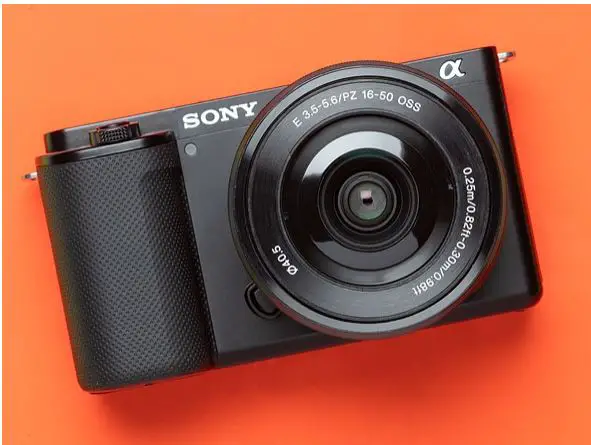
When I use the camera to vlog in selfie mode, the grip is quite comfortable – I was able to easily place my thumb in the indentation next to the lens for a stable grip. Holding the camera this way also makes it easy to access the large record button with your index finger.
When held in a standard orientation (not selfie mode), the grip feels a bit shallow in the hand and is less comfortable. That said, overall, the body feels very well-weighted. There’s no weather sealing, but the build quality seems decent enough aside from the flimsy port door.
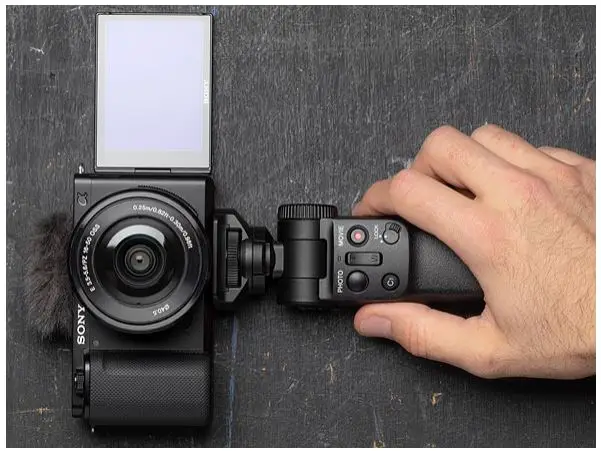
The Sony GP-VPTBT Bluetooth shooting grip ($100) is compatible with the ZV-E10 and makes video capture/vlogging even more enjoyable and painless. It also doubles as a (very) small tripod.
Video quality & behavior
Video capability is obviously the biggest selling point of this camera. Below, we dive into the various video captures modes and we’ll take a look at the video quality.
Video capture options
| Format | Resolution | Frame rate | Bitrate (MBps) |
|---|---|---|---|
| XAVC S (4K) |
|
|
|
| XAVC S (HD) |
|
|
|
* Taken from a cropped region of the sensor
Both the camera’s 1080 / 120p capture and 4K / 30p capture come with slight cropping, 1.14x and 1.23x, respectively. All other video settings use the full width of the sensor (unless IS ‘Active’ is enabled).
Vlogging demo
Our previous vlogging demo was shot in 4K / 24p using Optical IS only (via 16-50mm kit lens and built-in mic.
In general, the camera handles quite well as a vlogging tool. The built-in microphone provides decent quality audio, even when going out near a very noisy highway. The standard 4K / 24p + IS video combo uses the full width of the sensor, so I was able to leave the kit lens zoomed down to a 24mm equivalent. I also left the camera in its programmed exposure mode with the default ‘wide’ AF area option (AF-C). The camera handles changing light conditions with ease – there are no sharp aperture fluctuations. And I stayed focused throughout the clip, with minimal hunting, despite moving quite a bit.
My only real complaint here is that there is quite a bit of roller blind on shots with any movement, resulting in a distracting ‘jelly’ effect. More on that below.
Rolling shutter

This screengrab from a 4K clip shows the distraction ‘jello effect’ that can occur when you pan.
When recording 4K video, the ZV-E10 exhibits a rather noticeable and distracting jelly effect (the result of the rolling shutter) when a shot is moving quickly or a subject that is moving quickly enters the frame; the effect is most noticeable when shooting 4K / 24p and slightly less apparent when shooting cropped at 4K / 30p. The rolling shutter is less of a problem for Full HD footage.
| Video mode | Readout rate |
|---|---|
| 4K/24p | 33ms |
| 4K/30p | 27ms |
| 1080/24p | 13ms |
We measured the sensor read speed when shooting in the ZV-E10’s main video modes and indeed the read speed for 4K / 24p is slow enough to produce very pronounced rolling shutter artifacts. 4K / 30p is a bit better, so if you go for a wider angle lens than the kit, you may want to shoot in that mode. If you’re happy with 1080p footage, the rolling shutter isn’t a big deal, but you might not be a fan of quality, which we’ll take a look at next.
Video detail

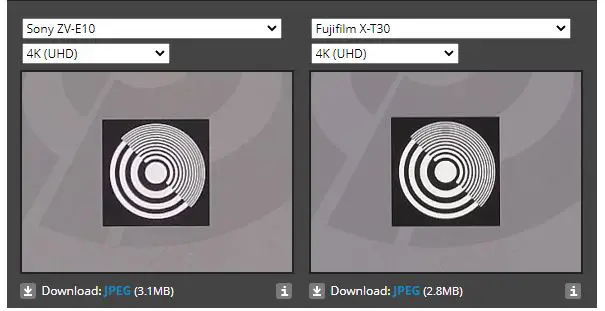
In our opinion, the closest competitor to the ZV-E10 is the Fujifilm X-T200. Since it offers the same video performance as the higher-end X-T30, we’ll use that camera as a substitute for comparison purposes. The UHD 4K capture from these two cameras has an impressive level of detail throughout the scene. Although it’s worth noting (and not obvious in our studio scene), the Fujifilm has a faster sensor scan speed than the Sony and therefore doesn’t suffer from the same distracting jelly effect.
Going back to 4K detail: Sony pulls the Canon EOS M50 (and thus the M50 Mark II, which has identical video capabilities) out of the water, in terms of 4K capture quality (and Canon uses a heavily cropped region sensor in 4K). And the 4K footage from the ZV-E10 even looks solid next to the high-end full-frame Sony a7 III. But in terms of capturing detail, the a7 III will still produce clearer images in less than perfect light.
Unfortunately, the camera’s Full HD footage is less than spectacular (which has been on par with Sony APS-C cameras for some time). Capturing details is nowhere near the level we are seeing in Fujifilm cameras. And 1080 / 120p images, which use a sensor cutout, look even softer.
Autofocus

AF performance from the ZV-E10 will give you a smile as wide as Belvederes. ISO 640 | 1/125 sec | F4 | 16-50mm @ 20mm
The ZV-E10 uses the same exceptional autofocus system like Sony’s latest a6000 series siblings, with 425 PDAF points and 84% sensor coverage. It also offers the same highly reliable eye and face detection functionality, which Sony has dubbed “Real-Time Tracking”. Unlike most of Sony’s competitors, these functions are well integrated into the AF user interface. For example, when the chosen AF point overlaps with a human subject, face/eye detection will automatically turn on and then turn off automatically when the AF point moves away from a human face.
In general, AF performance for still images and movies is identical to that of the a6400 and a6100.
Video AF
For vlogging purposes, when using the default ‘Wide’ focus area and AF-C, the camera does a good job of adjusting focus and keeping human faces sharp; face and eye detection is on by default. You can also touch the screen in wide focus mode to start tracking during video capture. Tracking is pretty sticky and reliable. To turn it off, press the button in the center of the rear command dial.
A lot of control over video AF behavior is offered from the menus. Users can adjust both the AF transition speed (how smoothly the camera changes focus from one subject to another) and the tracking responsiveness (the likelihood that the camera’s AF will stick with a subject, even if they briefly leave the frame). There are seven degrees of settings to choose from for each setting.
Image quality

Out of camera JPEG. ISO 3200 | 1/40 sec | F4.5 | 16-50mm @ 25mm
The image quality of the Sony ZV-E10 24MP is identical to that of the Sony a6100, which is to say, excellent. JPEG files display attractive colors and excellent detail retention, even at higher iSO values. Raw performance is pretty good too, offering a good degree of latitude for editing, although raw files are “lossy” compressed and extreme edits can show some artifacts.
Conclusion
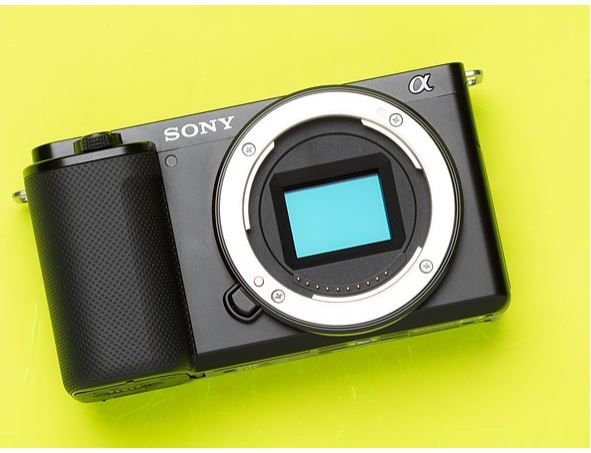
| What we like | What we don’t |
|---|---|
|
|
Overall
As a vlogging platform, the ZV-E10 has a lot to offer: good quality unclipped and oversampled 4K / 24p capture, headphone and microphone ports, a touchscreen for selfies, a high-quality built-in vlogging microphone, AF performance industry-leading video streaming capability, painless live streaming capability, and best-in-class battery life. But it also falls short in two key areas when it comes to video quality: poor rolling shutter performance in 4K and substandard footage in Full HD, which are complaints we’ve leveled against all recent a6000 series cameras.
Let’s get back to the good before we get back to the bad: From a design and body control point of view, the ZV-E10 makes a lot of sense. The camera offers excellent customization and handles quite well as a video creation tool. The built-in microphone offers pleasantly good audio. And while the touchscreen isn’t the most responsive and somewhat limited in use, as a means of quickly selecting an AF point, it works quite well.
Speaking of AF, the camera’s face and eye detection work extremely well during both still image and video capture. The product display feature is really cool/useful for vloggers too. And while there are plenty of autofocus options built into this camera, the default settings, including wide-area mode, should be useful for most people.
The ZV-E10 falls short in two key areas when it comes to video quality: poor rolling shutter performance in 4K and poor quality footage in Full HD.
Image quality matches Sony’s a6100, more geared towards still images, which is to say quite good. And while there’s no in-body stabilization to speak of, the camera offers two degrees of electronic IS when in video mode (one comes with a crop, but it’s more effective too). The kit lens also has optical stabilization to aid in the manual shooting. 4K footage is oversampled and shows excellent detail; there is 1.23x crop in 30p mode, but no crop when shooting at 24p.
Now back to the bad: when capturing 4K images with any kind of movement (like walking with the camera), there is quite a bit of blind, resulting in a distracting jelly effect. The full HD footage can be captured up to 120p (also 24/30 / 60p), but unfortunately, the quality of the camera’s 1080p detail capture is generally one of the worst in its class.
So where does that leave us? It leaves us with a camera that is very close to being a vlogger’s dream, both in terms of price and features. Sadly, for people who want to shoot anything other than a static shot, this camera doesn’t have a video mode that produces smooth images – wavy 4Kor poor quality 1080p, choose your poison. Of course, if you’re happy to swallow both pills, the ZV-E10 is an amazing camera.
Compared to peers

The ZV-E10 (left) and a6100 (right).
For vlogging, we would use the Fujifilm X-T200 over the ZV-E10 because the roller blind is much better controlled during 4K capture. Neither camera records stunning Full HD images, but Fujifilm’s is slightly better. The X-T200 also offers an EVF. On the other hand, Sony offers better video autofocus overall; there is no subject tracking option during video capture with Fujifilm. It also offers a better built-in microphone for vlogging.
Compared to the Canon EOS M50 II, we would go for Sony for several reasons. The quality of its 4K footage is far superior (and the M50 II cuts your 4K footage a lot), and Sony also has an advantage in video autofocus. Sony also has better battery life and a headphone jack.
Compared to the Sony a6100, it really depends on your needs. If video and vlogging are your main focus, the ZV-E10 is the obvious choice because it only offers a high-quality directional built-in microphone, headphone ports, and cinematic picture profiles. But if you have any interest in still images, the a6100’s EVF, while not amazing, makes for a more enjoyable shooting experience.
Compared to the Sony ZV-1, it’s a bit tricky, but we lean towards the compact camera – the rolling shutter is much better controlled on the ZV-1 and its built-in lens is arguably more versatile than the 16-50 lens kit. mm, that comes with the ZV-E10. The ZV-1 sensor is obviously smaller, but the video quality is still outstanding (although it lacks a headphone jack).
For a one-stop-shop vlogging solution, we would go for the compact one. But if you’re hoping to build a system/purchase a second or third lens, the ZV-E10 is the obvious choice. After all, there are plenty of quick-aperture prime lens options available for Sony’s crop sensor cameras, at affordable prices. And ultimately, you’ll be able to get a much shallower depth of field with the ZV-E10 than with the ZV-1. It’s also a better option if you plan to shoot in less than perfect light.
Scoring
Scoring is relative only to the other cameras in the same category.

| Conclusion As a vlogging platform, the ZV-E10 seemingly has a lot to offer: it shoots oversampled 4K/24p video using the full width of its sensor, features a selfie touchscreen, a good built-in directional microphone, headphone/microphone ports, and class-leading video autofocus. Battery life is also top of its class and the camera is Livestream ready, out of the box. Unfortunately, 4K video capture results in a distracting ‘jello effect’ for clips with movement and/or fast action. And Full HD video shows poor detail capture compared to the competition. | |||||
| |||||


